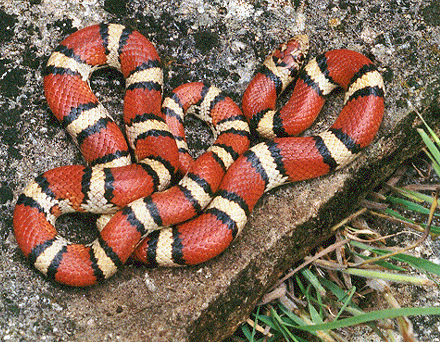Facts About Milk snake
The milk snake, scientifically known as Lampropeltis triangulum, is a non-venomous member of the kingsnake family, comprising 24 recognized subspecies. These vibrant snakes inhabit regions stretching from southeastern Canada through the United States and down to Central and South America. They vary in size, with the largest individuals reaching lengths of 120 to 132 cm (approximately 4 to 4.3 feet). Their striking coloration typically features bands of red, black, and yellow or white and black, although some populations exhibit different variations.
Milk snakes are highly adaptable and can thrive in a variety of habitats, including forests, prairies, and rocky slopes. They are primarily nocturnal and possess a diverse diet that includes insects, lizards, small mammals, birds, and even other snakes. Although they are not venomous, milk snakes can be quite defensive when threatened, often vibrating their tails and striking as a warning.
In terms of reproduction, milk snakes are oviparous, laying an average clutch of about 10 eggs. Mating season generally occurs from May to June, with the eggs hatching around August or September. In the wild, these snakes have a lifespan of approximately 12 years, but in captivity, they can live up to 21 years.
The International Union for Conservation of Nature (IUCN) classifies the milk snake as a species of "Least Concern" indicating they are not currently at significant risk. However, they do face certain threats, particularly from collection for the pet trade. Due to their attractive appearance, milk snakes are frequently bred in captivity for this purpose. Each subspecies has its own unique range and appearance, contributing to the diversity of this fascinating species.

 Guatemala
Guatemala